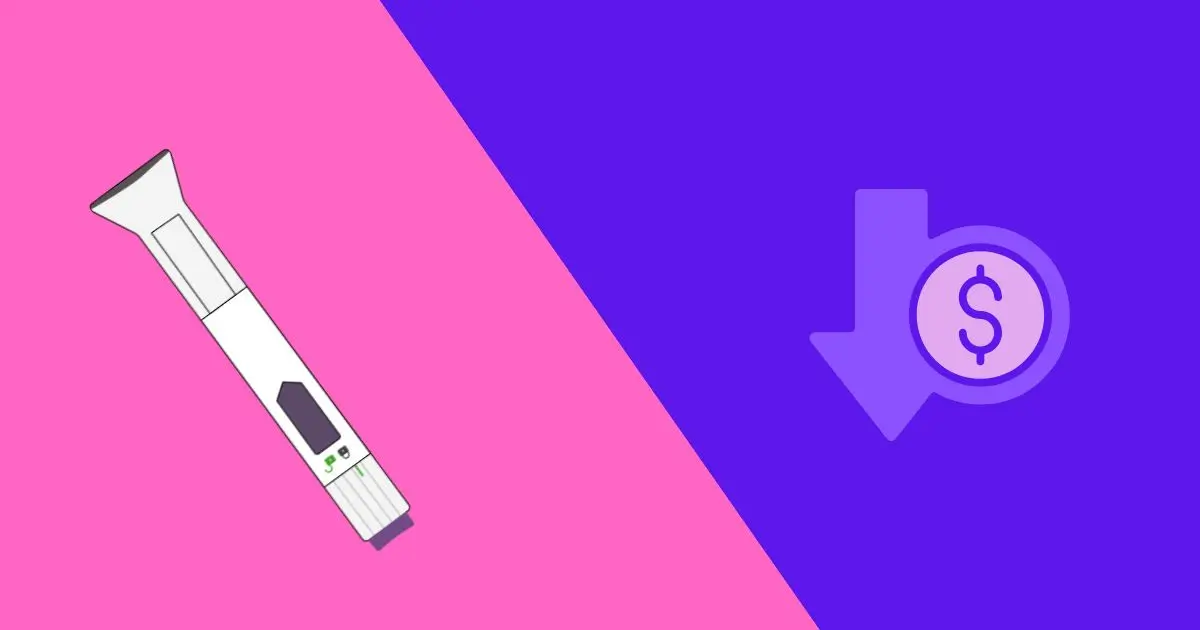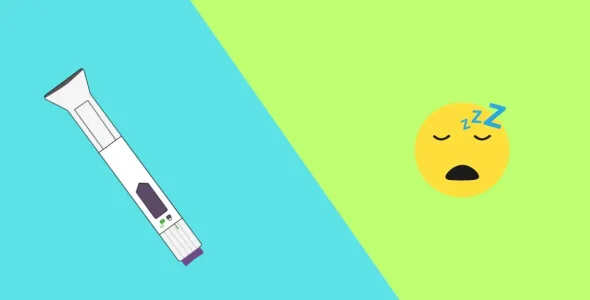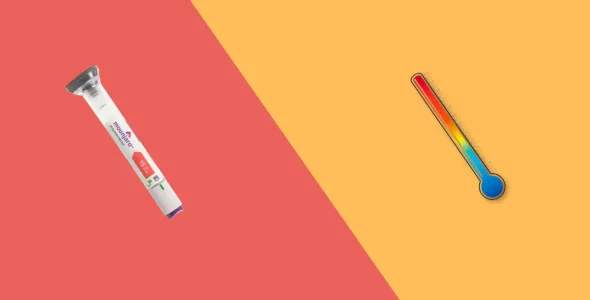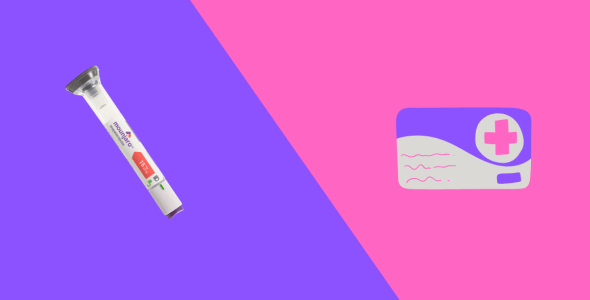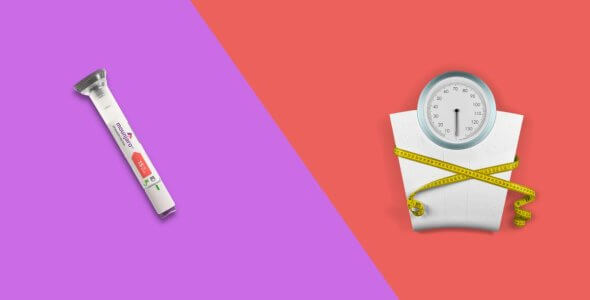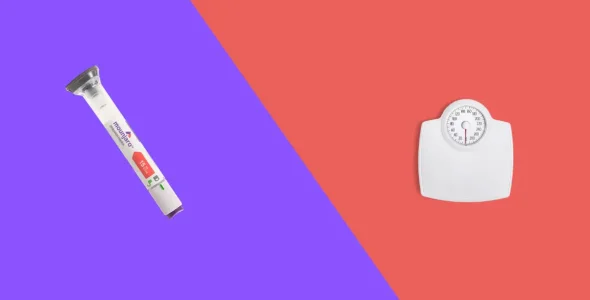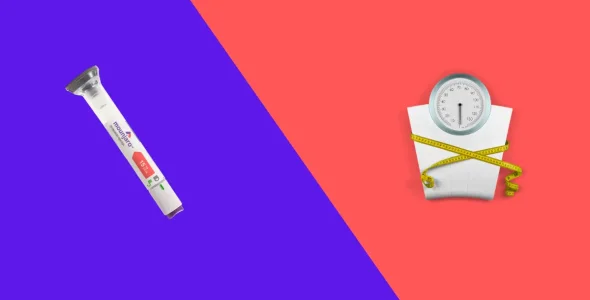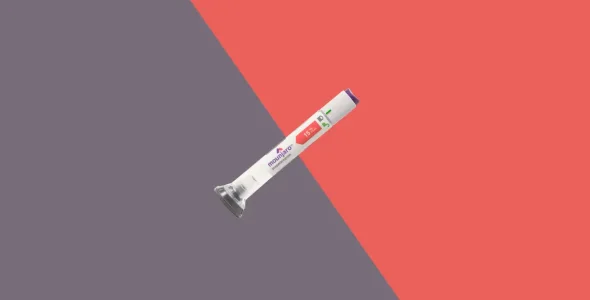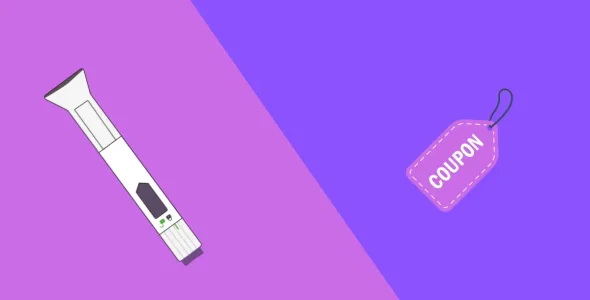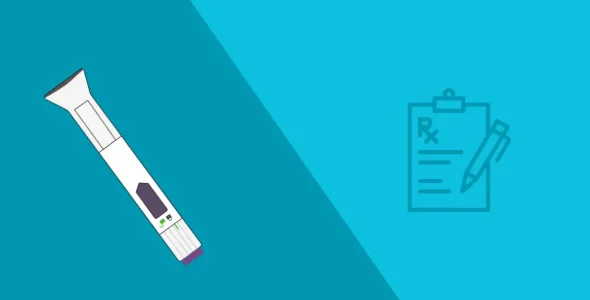The complete guide to the Mounjaro patient assistance program: Save on your prescription
You shouldn't have to choose between your budget and your health. Here’s the full picture of cost-savings for Mounjaro: the manufacturer’s savings card, eligibility rules, application process, what you’ll likely pay, and what to do if you don’t qualify.
Key highlights
- Mounjaro is an FDA-approved prescription drug for controlling blood sugar levels in people with type 2 diabetes and is also used off-label for weight loss in people with obesity or overweight.
- Mounjaro can be expensive, especially without insurance, with a retail price of about $1,000/month. Savings card programs and insurance coverage may help reduce costs.
- Eli Lilly, the maker of Mounjaro (tirzepatide), offers a savings card program for people who qualify. The Mounjaro Savings Card can reduce copays to as low as $25 per month for patients with commercial insurance. It’s not available for individuals enrolled in Medicare, Medicaid, or other government plans.
- Lilly Cares provides free medication to low-income, uninsured, or underinsured patients. Currently, Mounjaro is not covered but may be added in the future.
- Other ways to save include pharmacy discount cards (GoodRx, SingleCare), non-profit copay assistance foundations, free samples from healthcare providers, and alternatives like Zepbound.
Mounjaro is a prescription injectable medication approved by the FDA in 2022 to help lower blood sugar levels in adults with type 2 diabetes. It is also prescribed off-label for weight loss in people with obesity or overweight, as an adjunct to diet and exercise.
Mounjaro has an estimated monthly list price of $1,079.77, making it unaffordable for some. However, there are proven pathways to get help, most notably through the medication’s manufacturer, Eli Lilly, which offers official support programs and savings options to help make Mounjaro more affordable and accessible.
The key is to navigate a tiered system that includes manufacturer assistance programs, insurance coverage, and prescription discount card websites. By navigating these pathways, many patients can significantly lower their out-of-pocket costs or obtain coverage for the medication.
The Mounjaro Savings Card is a copay assistance program offered by Eli Lilly that helps reduce the cost of medication for people with commercial or private insurance. If you qualify, you can use the card to get Mounjaro for as little as $25/month. This program excludes people who are enrolled in government-sponsored insurance such as Medicare or Medicaid.
There is currently no patient assistance program (PAP) or generic alternative available for Mounjaro.
Need help affording your Mounjaro prescription? Our guide breaks down the official Savings Card and other ways to save. Learn about eligibility, how to apply, and potentially pay as little as $25.
The Mounjaro Savings Card: Who qualifies for the $25 copay?
The list price of Mounjaro is $1,069.08 per fill, according to the manufacturer, Eli Lilly and Company. Without insurance, the retail price is $1,000-$1,200 or more per month. Each fill includes 4 prefilled pens, which is a 28-day supply.
Although Eli Lilly doesn’t have a patient assistance program for people without insurance, it does offer a Mounjaro savings card to help eligible individuals with commercial insurance, which helps reduce their out-of-pocket costs.
If you qualify for the Mounjaro Savings Card, you can pay as low as $25 for a 1-month or 3-month prescription (A 1-month supply includes four pens for 28 days, while a 3-month supply includes up to 12 pens for 84 days). You need to have a private or commercial insurance drug plan that covers Mounjaro and a prescription for an FDA-approved use, such as type 2 diabetes.
Insurance coverage varies by plan, and some insurance companies may cover Mounjaro for type 2 diabetes but not for weight loss.
You cannot be enrolled in any state, federal, or government-funded healthcare program, such as Medicaid, Medicare, Medicare Part D, Medicare Advantage, Medigap, DoD, VA, TRICARE, or any state prescription drug assistance program. You must also be a resident of the United States or Puerto Rico and be at least 18 years old.
The Mounjaro savings card can help eligible individuals manage the cost of diabetes treatment. It can reduce the amount you pay for Mounjaro, making the medication more affordable if your insurance doesn’t cover the full cost of the medication. By using the savings card, you can save on your prescription, stay on track with your treatment plan, and manage your diabetes.
To learn more about the Mounjaro Savings Card and check if you qualify, visit the official website or call 833-807-MJRO (833-807-6576).
Pathway A: Mounjaro is covered by commercial insurance
If your commercial health insurance plan includes coverage for Mounjaro for its FDA-approved use in type 2 diabetes, you may qualify for significant savings through Eli Lilly’s savings card program.
- Eligibility criteria: You must be enrolled in a commercial (employer or private) insurance plan that covers Mounjaro for the FDA-approved type 2 diabetes indication. Patients on government-sponsored plans such as Medicare, Medicaid, or TRICARE are not eligible for this offer.
- Cost: With the Mounjaro Savings Card, eligible patients can pay as little as $25 for either a 1-month (4 pens/28 days) or 3-month supply (12 pens/84 days), depending on prescription and insurance coverage.
- Annual limit: The total amount of savings is capped at approximately $1,950 per calendar year, meaning once this limit is reached, patients will pay their regular copay or out-of-pocket cost for the rest of the year.
This pathway is ideal for individuals whose private insurance’s drug coverage includes Mounjaro but who want to reduce their monthly out-of-pocket expenses.
Pathway B: Commercially insured, but Mounjaro is not covered
For patients who have commercial insurance that does not cover Mounjaro, there’s still a way to save.
- Eligibility criteria: You must have a commercial insurance plan that does not cover Mounjaro.
- Cost: Patients can pay a reduced cash price, with savings of up to $463 per fill.
- Annual limit: $6,019 per calendar year.
This pathway helps ensure that Mounjaro remains more affordable for those whose insurance plans do not cover this medication.
How to apply for the savings card program
Here are the steps to apply for and start using the Mounjaro Savings Card Program:
- Check coverage with your doctor: Ask your doctor to confirm whether your insurance covers Mounjaro and to write the prescription accordingly.
- Enroll in the Savings card program: Visit Mounjaro’s official “Savings & Resources” page or a trusted source like SingleCare. Complete the Savings Card enrollment online. You may need to provide HIPAA authorization.
- Use the card at the pharmacy: Once approved, present the digital or printable Savings Card to your pharmacist when filling your Mounjaro prescription. Eligible patients may pay as little as $25 for a 1-month or 3-month supply.
- Tips for a 3-month supply: If you’re aiming for a 3-month supply (up to 12 pens), check with your insurance and pharmacy ahead of time, as some pharmacies may only stock a 1-month supply. Full steps and details are available on the official Mounjaro site.
This process ensures you take full advantage of the savings program while avoiding delays or surprises at the pharmacy.
LillyCares Patient Assistance Program (PAP): Help for the uninsured
Patient assistance programs are offered by drug manufacturers to provide medications at a lower cost or free to those who need financial help. This program is designed for low-income patients who are uninsured or underinsured, meaning they either have no insurance coverage at all or have coverage that doesn’t adequately cover their medication costs.
Lilly Cares Foundation is a non-profit charitable organization that provides Lilly medications free of charge for up to 12 months.
Eligible patients can receive free medication by meeting the program’s income and insurance requirements. Applicants must submit documentation of their financial situation and insurance status, which is reviewed by Lilly USA to determine eligibility.
While the program provides access to other Lilly medications, currently, Eli Lilly’s Lilly Cares Foundation does not cover Mounjaro. However, this could potentially change in the future.
Patients looking for Mounjaro will need to consider alternative financial support options, such as the Mounjaro Savings Card or other manufacturer-sponsored programs for cost assistance.
Call The Lilly Answers Center Monday to Friday at phone number 1-800-Lilly-Rx (1-800-545-5979) to verify if you qualify for any other financial assistance programs.
The general eligibility requirements are:
- Insurance status: You must either be uninsured or have Medicare Part D and meet certain financial requirements. If you have Medicare Part D, you may need to show that you were denied the Low-Income Subsidy (LIS, Extra Help).
- Income limit: Your household income must be at or below 400% of the Federal Poverty Level (FPL).
- Residency: You must be a legal, permanent resident of the United States.
To apply, you’ll need to provide proof of income (such as tax returns or W-2 forms). Your healthcare professionals must also complete and sign a section of the application before it can be submitted. This helps verify both your medical need and eligibility.
Medicare, Medicaid & co-pay relief options
Many insurance plans, including Medicare and Medicaid, will cover Mounjaro if used for type 2 diabetes. However, your copay will vary by plan, and your out-of-pocket costs will be higher until you meet your deductible. Most Medicare Part D plans cover many diabetes medications, including Mounjaro.
Medicare
Under current federal law, Medicare is not allowed to cover medications when they are prescribed specifically for weight loss. Because of this, many seniors face a major access gap when trying to get Mounjaro for obesity or weight management alone.
Medicare Part D can cover Mounjaro only when prescribed for its FDA-approved use in type 2 diabetes. If Mounjaro is prescribed for weight loss, Medicare cannot cover it.
Medicaid
Medicaid coverage varies state by state and is often more limited. Some states cover Mounjaro for type 2 diabetes when it is considered medically necessary. Coverage for weight loss use is rarely approved under Medicaid, although it varies by state.
This creates a significant gap for both seniors and lower-income individuals who may need the medication but do not meet coverage qualifications.
Non-profit foundations
For people who have commercial insurance but still face high out-of-pocket costs (high deductibles or copays), there are independent foundations that sometimes offer financial assistance. These programs are typically needs-based and may require proof of income.
Organizations such as the Patient Advocate Foundation, Patient Access Network Foundation (PAN), and HealthWell Foundation provide financial support to help cover copays and out-of-pocket medication costs.
Many foundations have disease-specific funds and may assist even if you have insurance, helping reduce the burden of high prescription costs.
These funds are limited and can run out. It’s important to apply as early as possible to maximize your chances of receiving assistance.
How to save on Mounjaro if not qualified
You can save on Mounjaro even if you are not eligible for the savings card in the following ways:
Mounjaro Coupons and pharmacy discount cards (GoodRx, SingleCare, Optum Perks)
You can obtain Mounjaro coupons or Mounjaro prescription discount cards through prescription drug savings companies like GoodRx and SingleCare, which offer up to 25% off the retail price. These coupons can be used at participating pharmacies near you without insurance. Prices vary by quantity, pharmacy, location, and medication form. Always compare prices before filling the prescription.
Discount cards cannot be combined with insurance or a manufacturer’s savings card. They serve as an alternative to cash payment when insurance coverage is unavailable or insufficient.
90-day refills
Some mail-order pharmacies offer discounts on a 3-month supply of medications. Ordering a 90-day supply at a time can also be more convenient. Eligibility may vary by your insurance plan’s quantity limits.
Switching to an alternative
If Mounjaro is prescribed off-label for weight loss, consider switching to Zepbound, which has the same active ingredient, tirzepatide, and is approved for weight loss. It can be purchased through LillyDirect for $499/month without insurance.
Discussing cost with your prescriber
Remember that Mounjaro is likely a long-term therapy, and the five-year cost (over $60,000 without assistance) necessitates a consistent financial strategy.
Speak with your doctor about the financial burden of Mounjaro and to determine whether it’s covered by your insurance plan.
Having this conversation ensures you can access treatment without unnecessary financial stress and explore every available support option.
Can you get Mounjaro for free?
Unless your health insurance covers Mounjaro with no copay, you generally can’t get it for free.
However, if you and your doctor decide that Mounjaro may be a good fit for you, your doctor may be able to provide free starter samples. These samples are supplied by the drug manufacturer to clinics and usually include four 2.5 mg pens, which is a 1-month supply.
To see if free samples are available, ask your doctor’s office. Availability varies, and not all clinics receive or keep samples on hand.
Frequently asked questions
Is there a free medication program (PAP) for Mounjaro if I have no insurance?
There is currently no free patient assistance program (PAP) specifically for Mounjaro if you don’t have insurance. Eli Lilly’s Lilly Cares program offers free medication for eligible low-income patients, but Mounjaro is not included at this time.
Can I use the Mounjaro Patient Assistance Program for weight loss?
No, the Mounjaro Patient Assistance Programs offered by the manufacturer only apply when the medication is prescribed for its FDA-approved use in type 2 diabetes, not for weight loss. While Mounjaro is often used off-label for weight loss, assistance programs won’t cover it for that purpose. For weight management, Zepbound (which has the same active ingredient) is the FDA-approved option and may offer more support and savings pathways.
Can I get the Mounjaro Savings Card if I’m on Medicare?
No, the Mounjaro Savings Card cannot be used if you’re on Medicare, Medicaid, VA, or TRICARE, because manufacturer savings programs are limited to people with commercial insurance. If you’re on a government-funded plan, you’ll need to check other options like coverage appeals, state Medicaid criteria, or non-profit co-pay assistance programs if available.
How long does the application process take?
The application process can take a few weeks from start to approval, depending on how quickly documents are submitted and reviewed. To avoid delays, make sure you and your healthcare provider complete all required forms and follow up if you don’t hear back within 1 to 2 weeks. Working closely with your doctor’s office can help move forward more efficiently.
My insurance denied my prior authorization. What now?
This is a common situation, and it doesn’t mean the process is over. A denial can actually support your case when applying for financial assistance programs that require proof of need. At the same time, ask your doctor to submit an appeal or a letter of medical necessity to your insurance plan. Many approvals happen on the second review.
Are there any alternative medications with assistance programs?
Yes. Other medications in the same class, like Ozempic and Trulicity, have their own savings and patient assistance programs that may be easier to qualify for depending on your insurance and medical history. If cost is a concern, ask your doctor whether one of these alternatives to Mounjaro may be appropriate for your treatment plan.
Conclusion: Save on Mounjaro with or without insurance
The main pathways to manage Mounjaro costs include the Mounjaro Savings Card for patients with commercial insurance.
Although Mounjaro is not currently included in Lilly Cares, the eligibility requirements and process are worth understanding, as the manufacturer may cover the medication in the future.
Other options, like GoodRx, non-profit copay foundations, or switching to lower-cost alternatives, can also help reduce expenses.
Since Mounjaro is often a long-term therapy, it’s important to have a sustainable financial strategy in place. The most important next step is to have an open conversation with your healthcare provider.
